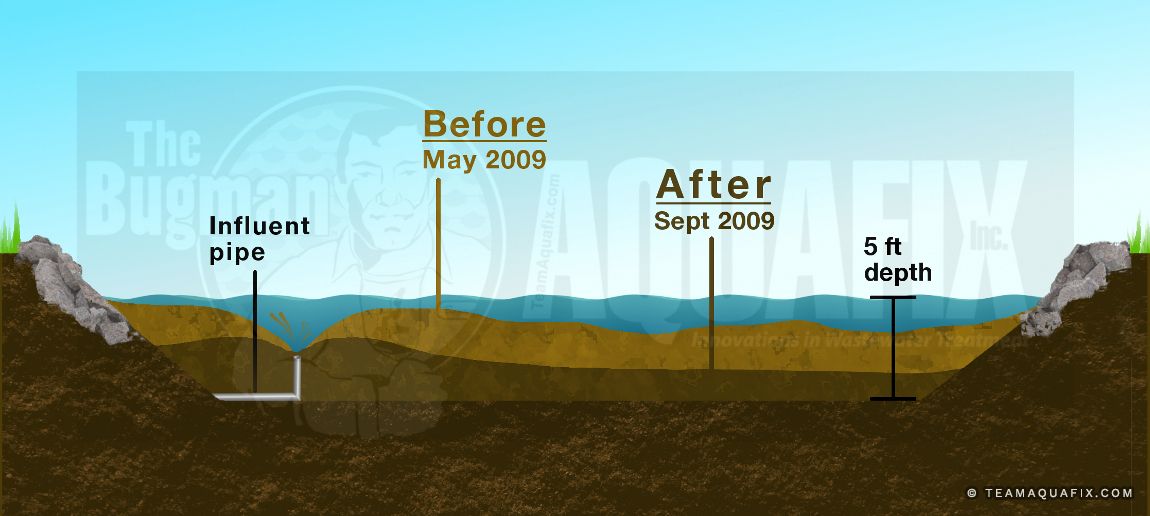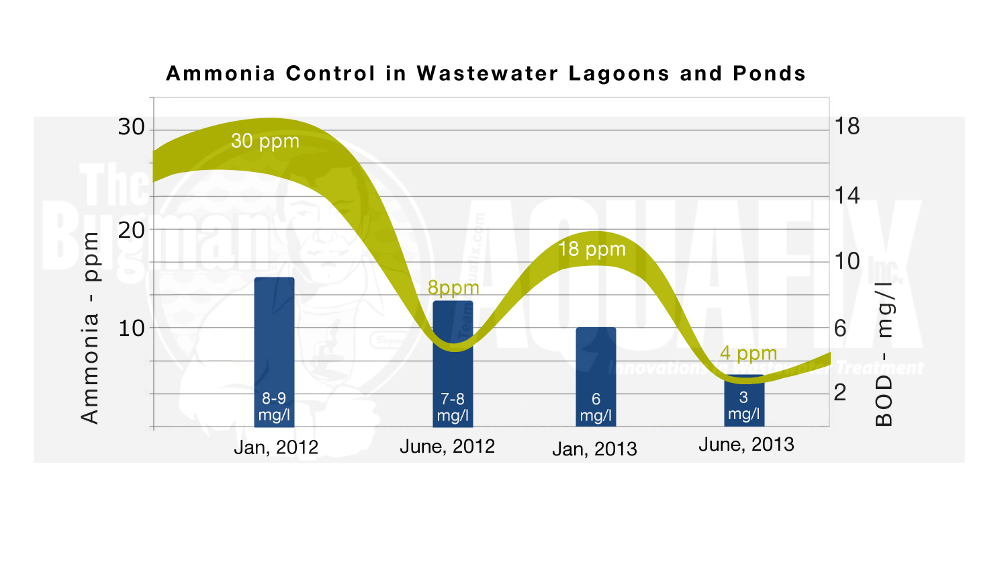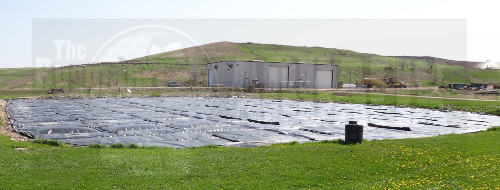
Wastewater Lagoon & Pond Treatment
Wastewater lagoons/ponds have been an economical way of treating wastewater for a long time, and they come in all shapes, sizes and depths. The idea behind a lagoon is to allow nature to decompose the BOD (fecal matter in most cities) and ammonia so that clean, clear water is going out in the effluent. Most wastewater lagoons have effluent limits on BOD and TSS, and a few also have limits on pH, dissolved oxygen and ammonia. In some industries, such as wineries, the ponds are usually both functional, and decorative. This can pose its own set of challenges. One of our lagoon customers says, “God runs them, I catch heck for them.”
Click on each type of wastewater lagoon to learn more about its treatment
Facultative Lagoons
Facultative lagoons are low cost because they do not have any electrical requirements and rely on wind action over the surface to incorporate dissolved oxygen that speeds decomposition. These lagoons, while affordable, do have a couple of drawbacks such as BOD accumulation, high amounts of sludge buildup, and odors.
Insoluble BOD accumulates on the bottom for anaerobic decomposition of solids while the soluble BOD stays in the water column.
Facultative ponds tend to have a faster rate of sludge buildup, generally ¼” to ½” per service year. By using our VitaStim Sludge Reducer or VitaStim Summer Slam during the summer up, to 60% of the sludge can be removed. This will depend on how much on the depth of the ponds and on how much wind action they receive. Lagoons that are less than 4-5 ft in depth, with good wind action tend to buildup at a slower rate. Lagoons that get a lot of BOD and are surrounded by trees, build up at a faster rate. They also have a difficult time removing ammonia. In winter the activity of the ponds come to a halt and sludge builds up faster; this is especially true in climates with long winters, such as Northern US and Canada.
These ponds will often get a spring turnover which can cause major odors. A spring turnover is that point when the surface water is 39.5°F and the densest. This surface water goes to the bottom and the warm bottom solids are pushed to the top. Turnover is a great time to feed products like our VitaStim Polar; this product allows the sludge that was lifted up from the bottom to be quickly digested, while the sludge is stirred up. VitaStim Polar can often reduce solids up to 50% just by feeding during the two week turnover period. Get a head of spring turnover by using VitaStim Polar through winter.
Aerated Lagoons
Aerated lagoons are used by:
Municipalities – cities often upgrade old facultative lagoons with aeration and mixing to improve
Industries – Meat packers, oil refineries, pulp and paper plants, cheese plants, sugar beet processors, and wineries. We have worked on lagoons in all of these industries.
Aerated lagoons tend to have issues in the following areas:
- Effluent Total Suspended Solids (TSS) – TSS is most often an issue of having too much planktonic algae in the effluent. Algae will raise the pH of a lagoon and block the sunlight. Sunlight penetration in a lagoon is what kills fecal matter. If you have an algae issue, add our adjuvant PondZilla Pro to your algaecide treatment to reduce costs. Call us and we can help you diagnose the problem and plan a solution.
- Biochemical Oxygen Demand (BOD) – BOD goes up with the TSS and also goes up if a lagoon is overloaded with food.
- Ammonia – Some lagoons have tight ammonia limits. Nitrifiers naturally have a very slow growth rate and in a pond system with water of 60°F (15.5°C) their growth rate is 4-7 days. Controlling ammonia can be tough, but to help in these situations we recommend our VitaStim Polar.
- Sludge Buildup – Sludge will buildup in the corners of a pond or around an aerator. We use our VitaStim Sludge Reducer and OxyPaks XL to lift and biologically remove 30-60% of the sludge from a pond. VitaStim Sludge Reducer stimulates the naturally occurring bacteria, while at the same time adds additional cultures. This product is a well proven and far cheaper approach then dredging.
- Effluent D.O. and pH – Many governments have a minimum limit on D.O. and a maximum limit on pH.
- Phosphorous – Controlling phosphorous in discharge can be difficult in a pond. We have an all-natural polymer, that we feed with ferric chloride to lower phosphorous. The polymer allows the operator to use less ferric. Call for rates: 888-757-9577
- Foaming and odors – In a cold climate when the ice is melting a lagoon can experience odors and high ammonia. We recommend our DAZZeL Eco Plus for odors and VitaStim Polar for ammonia. VitaStim Polar will reduce ammonia by 10-30%. If white or tan foam forms across the surface of a pond that is due to bacteria kicking off. If foaming is really bad, our Defoam 3000 will tame it.
Anaerobic Wastewater Lagoons
Anaerobic lagoons are common in meat packing, rendering, egg processing plants and manure pits. These ponds are made anaerobic by either a rubber cover or a floating grease cap. Anaerobic lagoons have the ability to breakdown high strength BOD at faster rates then their aerobic counterparts. Anaerobic ponds typically only have problems in a few areas:
- Odors – Odors will escape from under the anaerobic cover. We have a few recommendations for this situation. You can either spray our DAZZeL Eco Plus over the cover, inject DAZZeL products or add our VitaStim Grease into the waste stream under the cover.
- Grease Accumulation- Too much grease can buildup under the cover and for this our VitaStim Grease can be used to control the grease cap and it will also slow odor generation.
- Burping – Anaerobic ponds will often “burp” BOD and TSS into a downstream aerobic pond which causes it to be upset.
- Micronutrient Deficiency – some anaerobic lagoons experience lack of food and nutrients. Aquafix offers custom solutions to these problems. Please call for more information.




